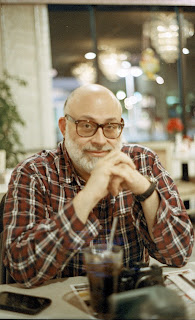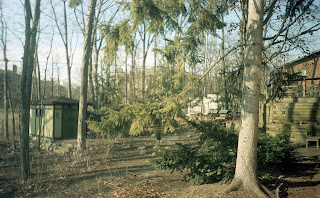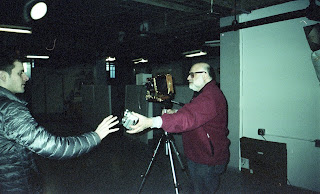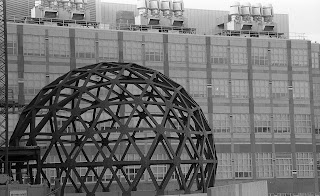The history of the film -- from Lomography's site:
"In 2010, we bought the last ever Jumbo Roll of original 400 ASA film from some renowned Italian filmmakers. Then, ever the ones to experiment, we left the film to age like fine wine in oak casks in the Czech Republic. Thankfully, our crazy instincts were rewarded — seven years later, we went back to discover that this fantastic film still produces refined colors with a beautifully unique tone. It’s one-of-a-kind Color Negative with an X-Pro feel, and we’re so excited to share it with you! There’s a only a very limited amount of this film available, so make sure you don’t miss out.
Lomography Tipster: If you would like to experiment different ISO, the Lomography Color Negative F²/400 film gives exciting results also with ISO 200. "
Obviously, if it came from Italy, this is old Ferrania/Solaris film. I don't recall any experience with that, but hey, I figured that I would still give it a go. The ad colors showed the film as having more of a pastel appearance, with some trending towards blue in the neutral colors. I loaded two cameras with the film -- my Nikon FM2N, and my Minolta XG-M. The film in the XG-M was finished first, and I developed it in a fresh Unicolor C-41 kit from the FPP store. About half the roll was shot in New Jersey while at the FPP HQ, and the rest was shot in Ann Arbor and a new state park in Jackson Co., MI. I rated the film at ISO 400, used Aperture-priority mode, and did not do any exposure compensation for the shots. I used an Epson V700 scanner to scan the negatives.
The film base is a dark orange-red, and the frames looked uniformly overexposed to my eye. As we know, scanning and post processing can do wonders, The images did tend to have muted pastel colors, slightly bluish in the neutral colors, and a bit soft. Not necessarily a bad thing, but I ended up tweaking every image to make them satisfactory to my taste, at least. While the Lomo site says one can shoot it at 200 for exciting results, I think one should go the other way. ISO 800 may be where this film really shines. The roll in my Nikon is about half shot at 400, and I am going to do the rest at 800 and see what I get. I'll post an uncorrected image from one frame first, and my corrected version after that. The remaining images all reflect my adjustments in Paint Shop Pro, reducing the exposure and in some cases, doing some auto local tone-mapping for a better effect.
 |
| unadjusted image - straight scan |
 |
| adjusted to my liking |
and here we go...
Judging by the indoor photos, this film could be easily rated at ISO 800. I have used that XG-M many times, so I know it's not overexposing due to faulty metering. My second roll will be additional data, for certain.
Okay, what do I think so far? I'm on the fence. I sort of like it, and the indoor image of Mike Raso is quite good. I think a little underexposure might be good. I also need to shoot it with more people as subjects and see how it goes. Of course, if you want a washed-out Lomo look to your images, this film is perfect. As of this evening, I see that Lomography Color Negative F²/400 is still sold out, so my remaining stock is all I will probably have on hand. If you have shot some, let me know your opinion, as well!











































